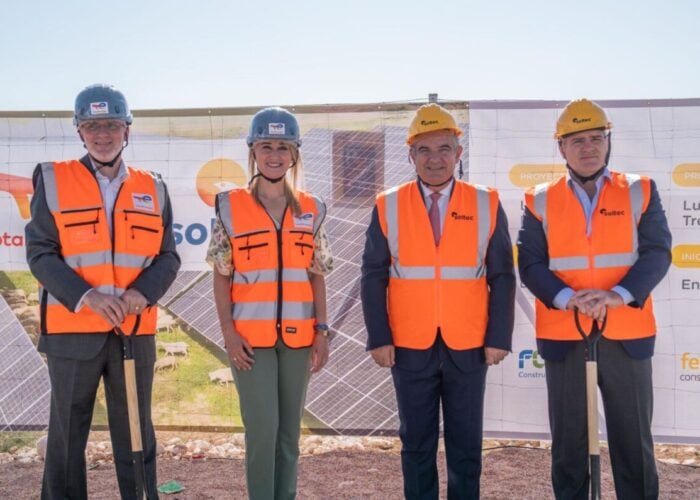More losses were reported by Yingli Green, despite module shipment volumes increasing by 13.7%, to a new historical high on sales of US$488.5 million dollars, down from over US$500 million in the prior quarter. Declining ASPs were behind the losses that climbed to US$90.2 million in the second quarter. The company revised down its PV module shipment target to be in the range of 2.1GW-2.2GW, representing an increase of up to 37.2% year over but significantly down from previous guidance of shipments reaching as much as 2.5GW.
Strong demand and claimed market share gains in Europe and in particular, Germany were behind the sales increase in the second quarter. However, sales in the US fell markedly from 26% of revenue in the first quarter of 2012 to only 9% in the second quarter.
Unlock unlimited access for 12 whole months of distinctive global analysis
Photovoltaics International is now included.
- Regular insight and analysis of the industry’s biggest developments
- In-depth interviews with the industry’s leading figures
- Unlimited digital access to the PV Tech Power journal catalogue
- Unlimited digital access to the Photovoltaics International journal catalogue
- Access to more than 1,000 technical papers
- Discounts on Solar Media’s portfolio of events, in-person and virtual
A significant drop-off in demand from Germany as a result of the pull-in of demand before FiT changes and demand pick-up in China, which isn’t expected to provide meaningful revenue until the fourth quarter means shipments in the third quarter are expected to decline by 15%.
“Despite the continued challenging market conditions in the second quarter, we managed to keep our growing momentum as we increased module shipment volumes by 13.7% over the previous quarter and achieved a gross margin of 4.6%,” commented Liansheng Miao, Chairman and Chief Executive Officer of Yingli Green Energy.
The gross margin declined to 4.6%, compared to 7.8% in the first quarter, which was said to have been due primarily to module ASP declines, though these were partially offset by a polysilicon and auxiliary materials price decline. Continued manufacturing cost reduction also contributed but could not fully offset module ASP erosion, suggesting ASP declines were higher than expected compared to managements expectation at the end of the first quarter.
Inventory overhang
Despite market share gains as the company attracted more installers and distributors, concerned about other supplier’s financial health, industry overcapacity meant that falling ASPs continued to fuel challenging market conditions. Yingli Green said that inventories increased by approximately US$85.5 million to US$601.5 million in the second quarter. Approximately 60% of inventories were in finished goods in the quarter.
Concerns were also raised over accounts payable, which increased from US$629.3 million to US$686.7 million and days payable outstanding increased by 10-days to 133 days.
Production update
With inventory levels creating a problem, Yingli said that it would address working capital needs by adjusting manufacturing utilization rates in the third quarter. Utilization rates were said to be in the range of 80% to 85% for the next quarter but could improve in the fourth quarter to 85% to 90%, depending on the expected market rebound, especially from demand in China.
Despite non-optimum utilization rates, non-polysilicon costs were said to have declined ‘moderately’ from US$0.57 to US$0.55/W, which kept the company highly competitive on production costs levels. Blended polysilicon costs were nothing to shout home about at US$30/kg, the purchase of polysilicon on the spot market is expected to lower costs sufficiently to support production cost declines for several quarters ahead.
Management also highlighted that enhanced ingot casting techniques had supported wafer quality improvements as well as improving solar cell conversion efficiencies.
Overall, non-poly processing costs were expected to fall by US$0.04 to US$0.05 per watt in the remaining quarters of the year. However, several other comments in the conference call highlighted problems currently faced by other tier-1 manufacturers. Firstly, management noted that it had halted previously planned capacity expansion plans, though about half of the projected capacity increase had been completed.
Secondly, management noted that its advanced cell and module technology under its ‘PANDA’ nameplate had seen shipments of around 120MW in the first-half of the year. Yet that figure wouldn’t increase in the second-half of the year.
Following an industry pattern was the lack of capital spending. Management inferred that capital spending was more dictated by previous order commitments than actual need to expand or make technology migrations.
The US$60 to US$70 million quarterly CapEx run-rate, included approximately US$10 million to US$15 million in maintenance costs, according to the company. Although the CapEx figures remain low, relative to many other PV manufacturers the spending level remains relatively high.
New market leader
Despite the reduction in its shipment forecast for the full-year, Yingli Green is expected to surpass major rival, Suntech as the number 1 module manufacturer (on a MW shipment basis) for 2012, while potentially set ting a new industry record for shipments of over 2GW in a given year.







